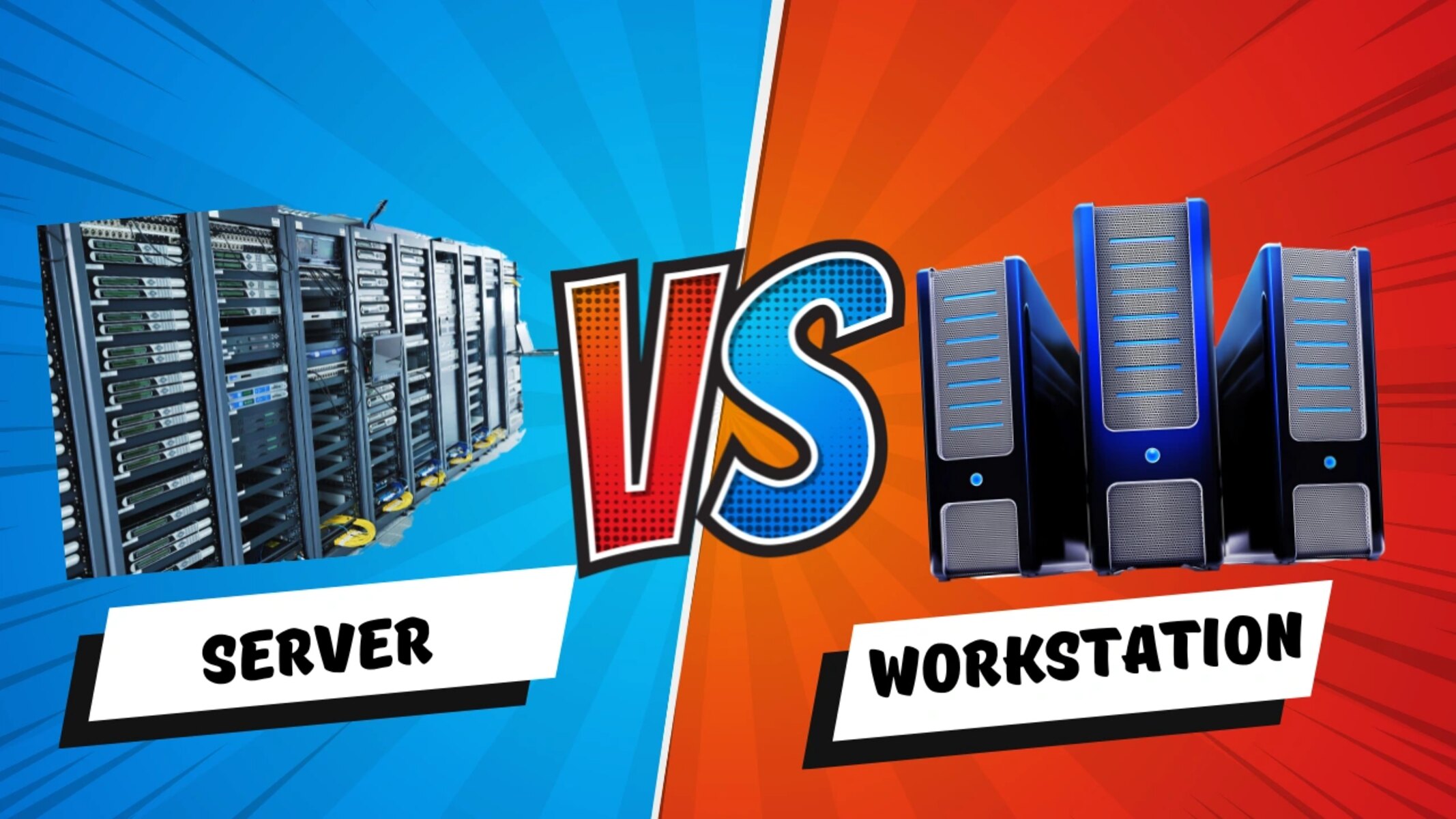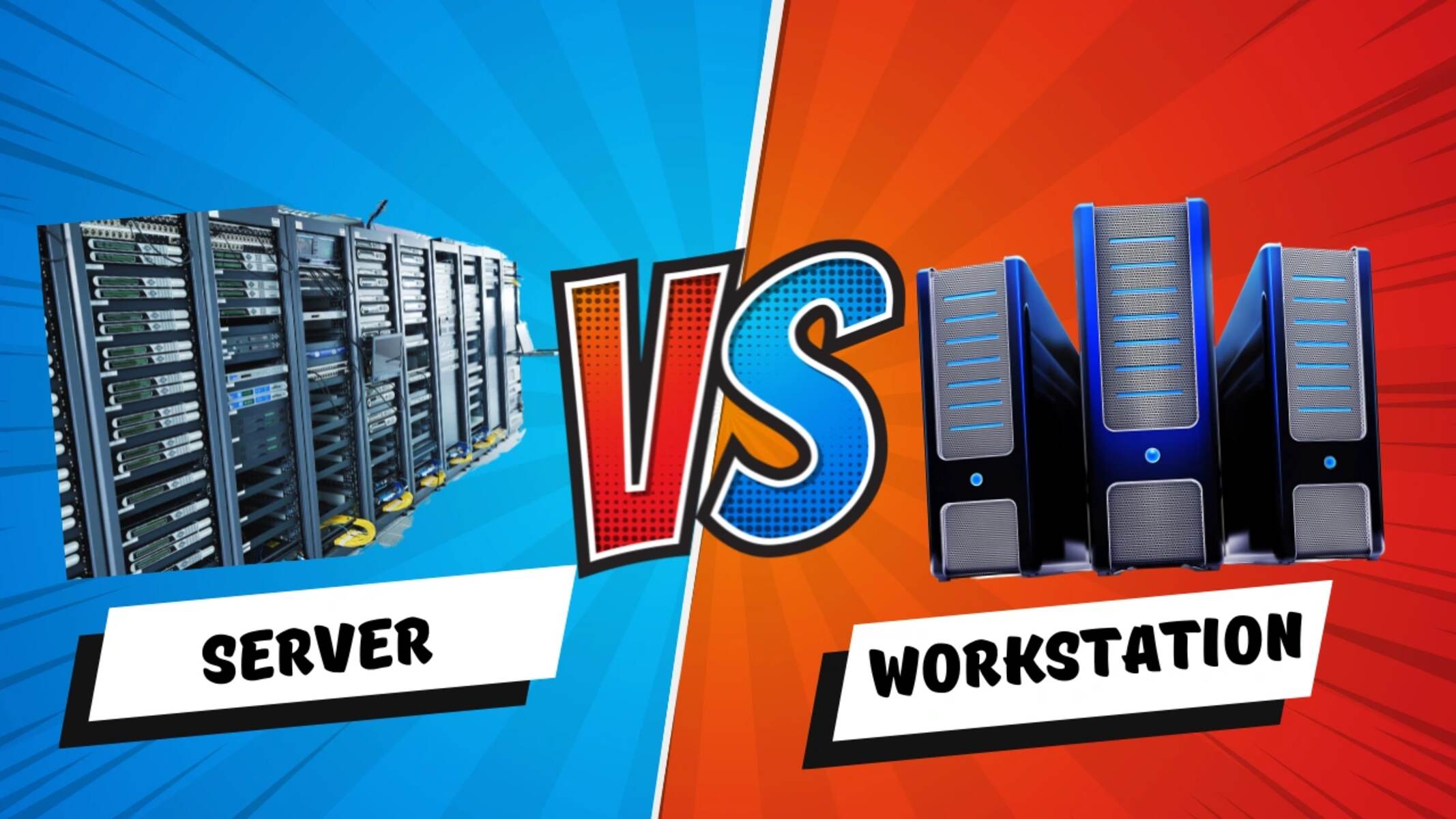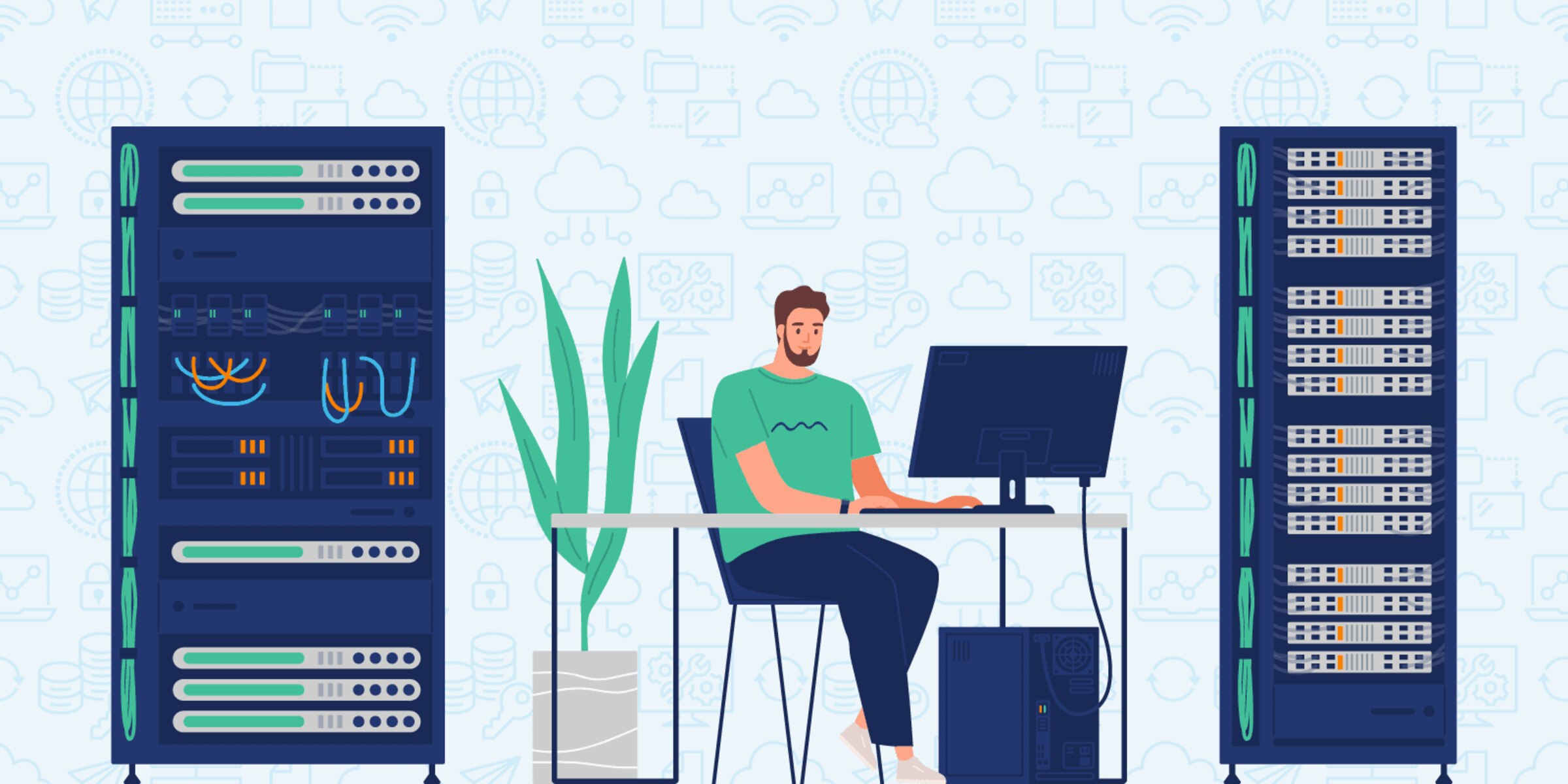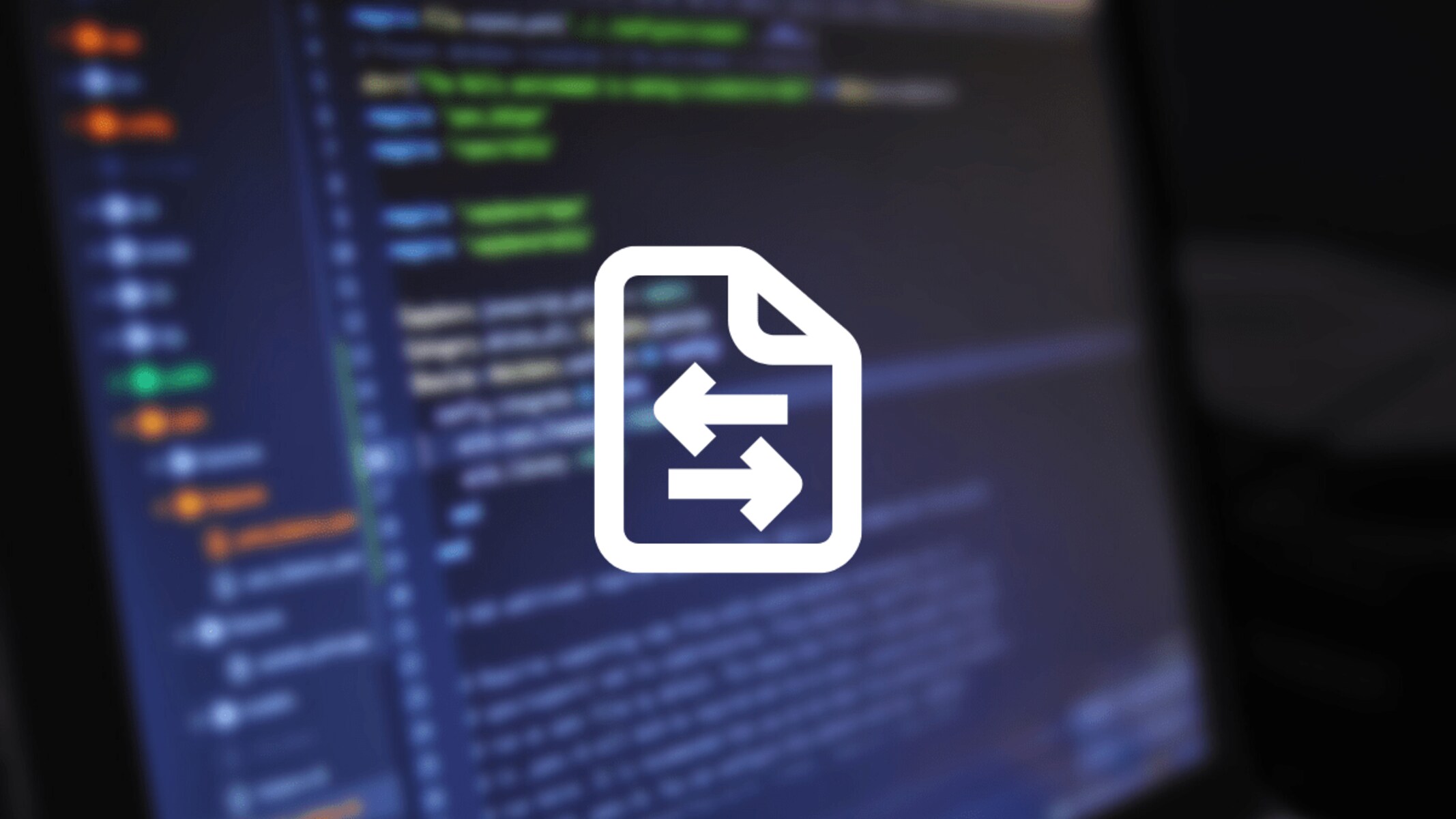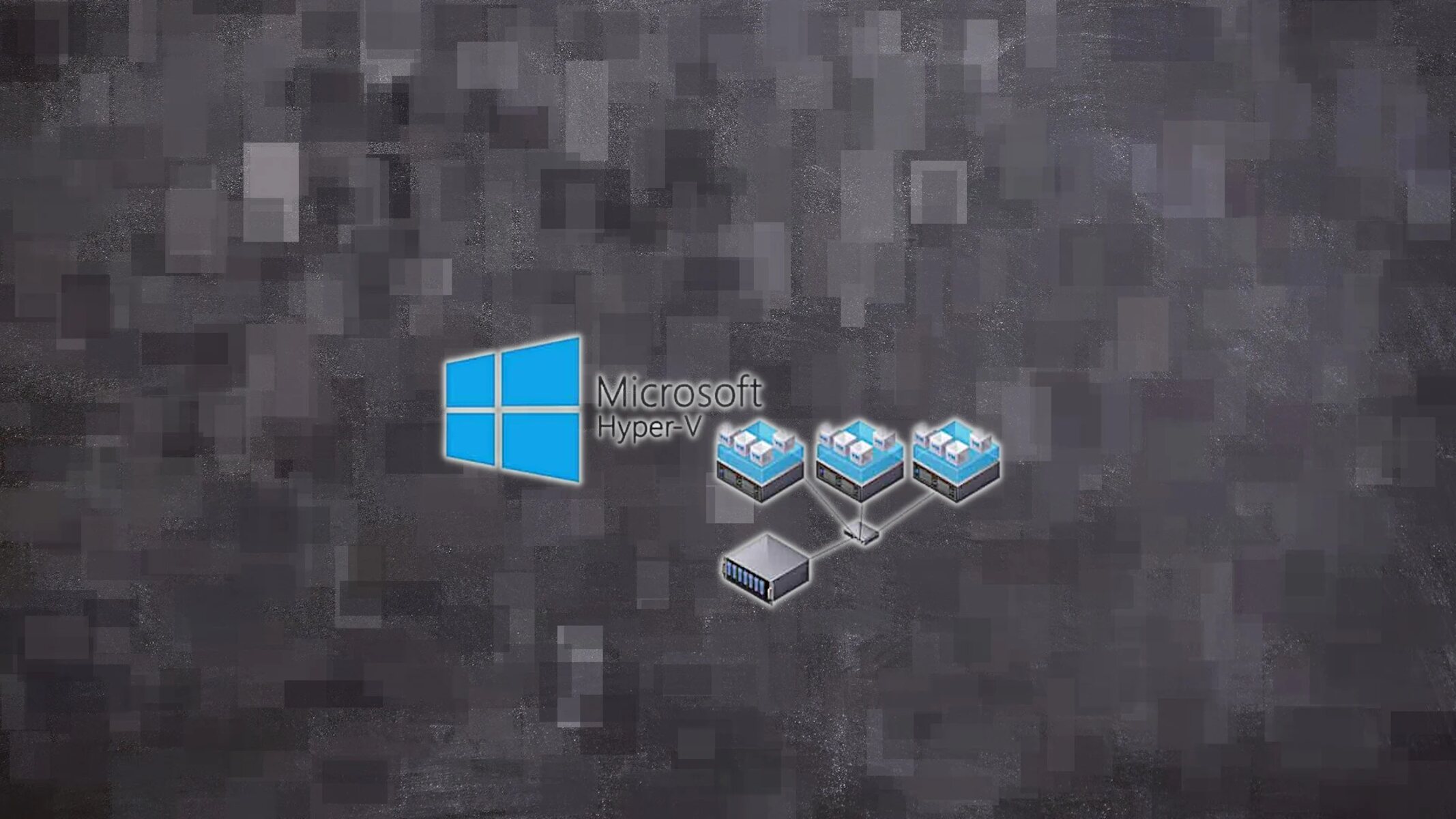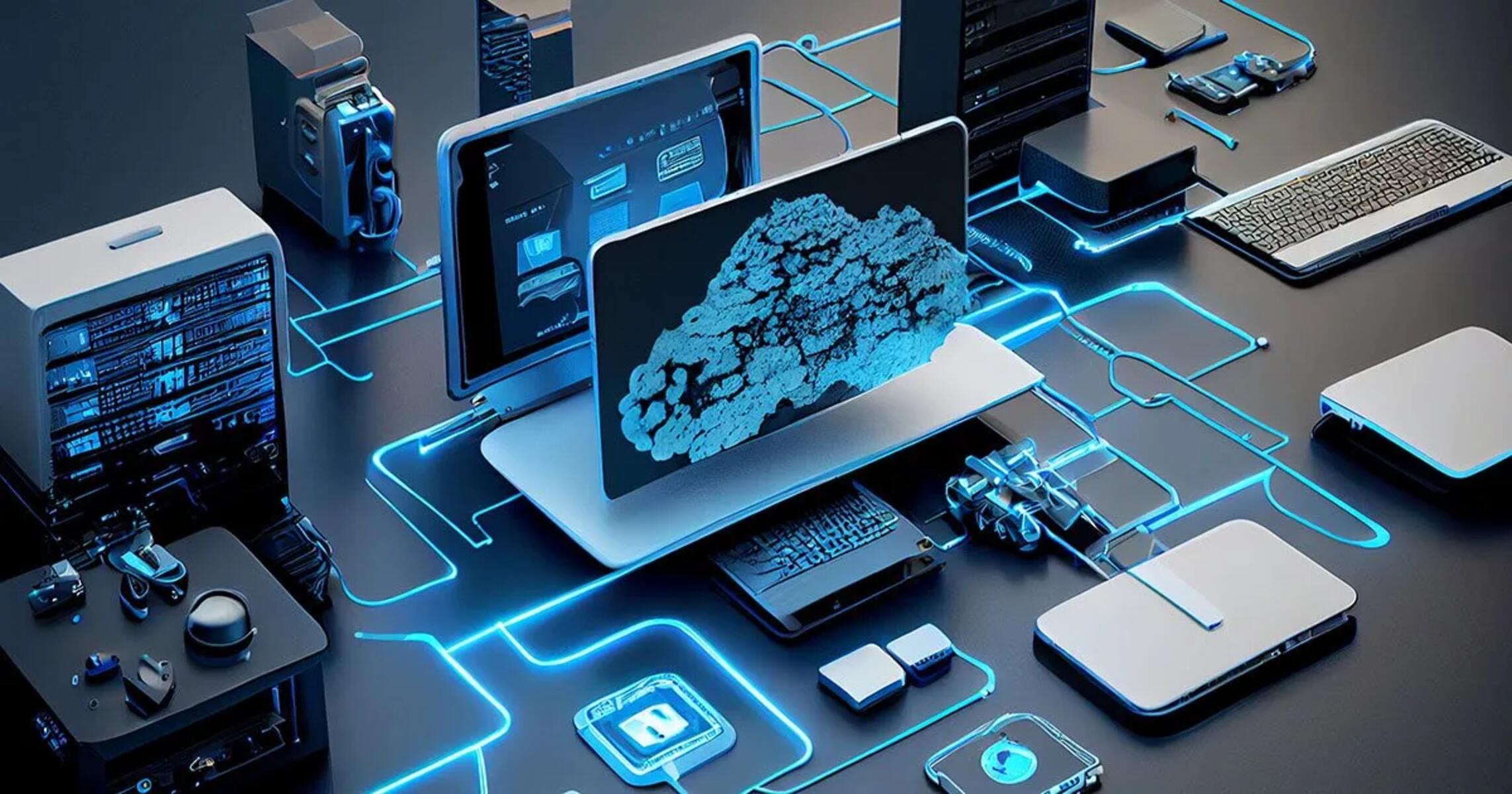Definition of a Server
A server is a powerful computer system that is designed to provide services and resources to other computers, known as clients, over a network. It acts as a central hub for data storage, processing, and communication within a networked environment. Servers are typically designed to be highly reliable, scalable, and efficient to handle a large number of client requests simultaneously.
Unlike a workstation or personal computer, which is primarily used by an individual user, a server is built to serve the needs of multiple users or clients simultaneously. Servers are commonly used in various industries and organizations, including businesses, government agencies, educational institutions, and web hosting companies.
Servers can perform a wide range of functions, depending on the specific needs of the users and the type of server being used. Some common types of servers include:
- File servers: These servers store and manage files, allowing users to access and share data within a network.
- Web servers: Web servers host websites and web applications, delivering content to clients through the internet.
- Database servers: These servers store and manage databases, allowing users to store, retrieve, and manipulate data efficiently.
- Email servers: Email servers handle the sending, receiving, and storage of email messages.
- Application servers: These servers run specific applications or software, providing services and resources to clients.
Overall, servers play a crucial role in facilitating communication and collaboration within a networked environment. By centralizing resources and providing specialized services, servers help improve efficiency, security, and productivity for both individual users and organizations as a whole.
Definition of a Workstation
A workstation is a high-performance computer system that is primarily used by an individual for specialized tasks that require significant processing power and resources. It is designed to provide the user with a powerful and efficient platform for demanding work, such as graphic design, video editing, engineering simulations, and scientific research.
Unlike a server, which serves multiple users or clients over a network, a workstation is dedicated to a single user and their specific computing needs. Workstations are typically equipped with robust hardware components, including advanced processors, ample memory, high-end graphics cards, and fast storage devices, to ensure smooth and efficient performance.
Workstations are commonly found in industries such as design, architecture, media production, engineering, and research, where the nature of work demands intensive computational capabilities. They provide professionals with the tools necessary to handle complex tasks, process large amounts of data, and run resource-intensive software applications.
One key feature of workstations is their ability to handle multi-threaded applications and processes, allowing users to work on multiple tasks simultaneously without compromising performance. This multitasking capability is essential for professionals who need to run several resource-hungry applications concurrently.
In addition to their powerful hardware specifications, workstations often come with specialized software and peripherals tailored to specific industries. For example, design workstations may include professional-grade graphic design software and high-resolution displays, while engineering workstations may have simulation software and input devices for CAD/CAM applications.
While workstations are primarily used by individuals, they can also be integrated into a network environment to share files, access shared resources, or collaborate with other users. In such cases, workstations may connect to servers to retrieve and store data, or they may participate in a client-server model to access shared applications and services.
Overall, workstations serve as dedicated powerhouses for professionals who require exceptional processing capabilities and specialized tools to accomplish their tasks efficiently. With their high-performance hardware, multi-tasking capabilities, and customized software, workstations enable users to tackle complex workloads and achieve outstanding results.
Purpose and Functionality of a Server
Servers serve a variety of purposes and possess extensive functionality that is crucial for the efficient operation of networks and the delivery of services to clients. Let’s explore some of the key purposes and functionalities of servers:
Data Storage: One of the primary functions of a server is to provide centralized data storage. It enables users to save and retrieve data from a shared location, facilitating data access and collaboration within a networked environment. By storing data on a server, organizations can ensure data integrity, security, and backup.
Resource Sharing: Servers allow for the sharing of resources among multiple clients. For example, file servers enable users to share files and documents, ensuring seamless collaboration. Print servers manage print queues and enable users to send print jobs to shared printers. By centralizing these resources, servers simplify administration and enhance efficiency.
Application Hosting: Servers can host various applications, allowing users to access them remotely. This eliminates the need for individual installations on each client device and ensures consistent access to the latest versions of applications and software. Application servers centralize management and updates, simplifying IT administration.
Website Hosting: Web servers host websites and deliver web content to users over the internet. They store website files, manage database connections, and handle user requests, ensuring that websites are accessible and responsive. Web servers often support additional functionality such as content management systems (CMS) and e-commerce platforms.
Communication Services: Servers play a crucial role in facilitating communication within organizations. Email servers handle the sending, receiving, and storing of email messages, enabling efficient communication among users. Chat servers, voice-over-IP (VoIP) servers, and video conferencing servers enable real-time communication and collaboration.
Data Backup and Recovery: Servers can be configured to perform regular backups of critical data, ensuring that important information is protected and can be restored in the event of data loss or system failure. This functionality is vital for maintaining business continuity and minimizing the impact of disruptions.
Security and Access Control: Servers often incorporate security measures such as firewalls, encryption, and authentication protocols to protect data and network resources. They play a crucial role in enforcing access control policies, managing user permissions, and safeguarding sensitive information from unauthorized access.
Virtualization and Cloud Computing: Servers are essential components of virtualization and cloud computing environments. They enable the consolidation of multiple virtual machines on a single physical server, maximizing hardware utilization and simplifying management. Server clusters and cloud server infrastructures provide scalable and flexible computing resources.
Overall, servers are integral to the functioning of networks and play a critical role in providing services, managing resources, and ensuring the smooth operation of organizations and their clients. Their diverse range of purposes and functionality makes them indispensable in supporting modern computing environments.
Purpose and Functionality of a Workstation
A workstation serves a specific purpose in providing professionals with the necessary computing power and resources to perform demanding tasks efficiently. Let’s delve into the purpose and functionality of workstations:
High-Performance Computing: Workstations are designed to handle resource-intensive tasks that require significant processing power. They are equipped with powerful processors, ample memory, and high-end graphics cards to ensure smooth and efficient performance in specialized fields such as graphic design, video editing, engineering simulations, and scientific research.
Specialized Software and Tools: Workstations often come pre-installed with specialized software and tools tailored to specific industries. Graphic designers may have access to professional-grade design software, CAD/CAM applications for engineers, or data analysis tools for researchers. These software packages leverage the workstation’s capabilities to enhance productivity and enable professionals to achieve outstanding results.
Multi-Tasking Capabilities: Workstations are designed to handle multi-threaded applications and processes. This allows users to work on multiple tasks concurrently without sacrificing performance. Whether it’s editing multiple high-resolution videos or running complex simulations, workstations enable professionals to manage workloads efficiently and maintain productivity.
Large Storage Capacity: Workstations typically have ample storage capacity to accommodate large files and datasets. This is particularly important for professionals dealing with media files, 3D models, or massive datasets. The availability of fast storage devices, such as solid-state drives (SSDs), allows for quick access to files, reducing load times and improving overall efficiency.
Customization and Expandability: Workstations often offer options for customization and expandability. Professionals can choose and upgrade components like processors, graphics cards, memory, and storage to meet their specific requirements. This flexibility allows workstations to adapt to evolving needs and ensures that professionals have access to the latest technologies and advancements.
High-Quality Monitors and Peripherals: Workstations are often paired with high-resolution monitors that enable professionals to work with precise details and accurate color representation. Additionally, specialized input devices like graphics tablets or high-performance mice enhance workflow and precision, providing an optimal user experience while working on intricate tasks.
Security and Privacy: Given the sensitive nature of work performed on workstations, security and privacy are essential. Workstations often come with advanced security features, including encryption, biometric authentication, and robust antivirus software, to protect valuable data and intellectual property from unauthorized access or cyber threats.
Collaboration and Remote Access: While workstations are primarily used by individual professionals, they can also facilitate collaboration and remote access. Workstations can be integrated into network environments to enable file sharing, access to shared resources, and collaboration on projects. Additionally, professionals can remotely access their workstations from different locations to continue working seamlessly.
Overall, workstations are purpose-built machines that offer exceptional computing power, customization options, and specialized software to enable professionals in various fields to perform complex tasks efficiently. With their ability to handle demanding workloads and their specialized features, workstations empower professionals to achieve exceptional results in their respective industries.
Hardware Specifications of a Server
Servers are equipped with specific hardware components that are designed to handle the demands of hosting services, managing data storage, and supporting multiple clients simultaneously. Let’s explore the key hardware specifications commonly found in servers:
Processor: Servers often utilize high-performance processors that can handle multiple tasks simultaneously. These processors typically have multiple cores and higher clock speeds to ensure efficient processing of client requests and data management.
Memory (RAM): Servers require ample memory to support multiple client connections, data processing, and the smooth operation of applications. Server-grade memory modules are designed for reliability, stability, and greater performance, often with high capacities to handle large workloads.
Storage: Servers have extensive storage capabilities to handle the storage of data and applications. This includes both primary storage for immediate access to data and secondary storage for backup and archival purposes. Servers may use a combination of hard disk drives (HDDs), solid-state drives (SSDs), or even specialized storage arrays for improved performance and redundancy.
RAID Controllers: Many servers utilize RAID (Redundant Array of Independent Disks) configurations to improve data storage performance, reliability, and redundancy. RAID controllers allow for the management of multiple drives and provide data protection against disk failures.
Network Interfaces: Servers often have multiple network interface cards (NICs) to support high-speed network connectivity and handle the demands of client requests. These NICs may support gigabit Ethernet or even faster connections, enabling efficient communication within the network infrastructure.
Power Supplies: Servers require robust power supplies to ensure uninterrupted operation in mission-critical environments. Redundant power supplies are often employed to provide backup power in case of failure and to maintain continuous availability.
Cooling Systems: Servers produce heat due to their high-performance components and constant operation. Cooling systems, typically consisting of multiple fans and heat sinks, are deployed to maintain optimal operating temperatures and prevent hardware failures.
Expansion Slots: Servers often have multiple expansion slots to accommodate additional hardware components or specialized cards. These slots can be used for networking cards, storage adapters, or other expansion options to enhance server capabilities based on specific requirements.
Remote Management: Many servers include a dedicated remote management interface, such as Intelligent Platform Management Interface (IPMI), allowing administrators to remotely monitor and manage server operations, even if the server is offline or experiencing issues.
Redundancy Features: High-end servers incorporate redundancy features to minimize downtime and ensure continuous availability. This includes redundant power supplies, hard drives with built-in redundancy (RAID), and redundant cooling systems to prevent single points of failure.
Overall, the hardware specifications of servers are optimized to provide high performance, scalability, and reliability to support the demanding needs of hosting services, managing data storage, and facilitating the smooth operation of network infrastructure.
Hardware Specifications of a Workstation
Workstations are specifically designed to provide professionals with the power and performance needed to handle resource-intensive tasks efficiently. This is achieved through a combination of high-quality hardware components that meet the demands of specialized work. Let’s explore the key hardware specifications commonly found in workstations:
Processor: Workstations often feature high-performance processors with multiple cores and high clock speeds. These processors are designed to handle demanding tasks such as 3D rendering, video editing, and scientific simulations efficiently. Specialized workstation processors, such as those from Intel Xeon or AMD Ryzen Threadripper series, offer increased cache sizes and optimized performance for workstation applications.
Memory (RAM): Workstations require ample memory to comfortably handle memory-hungry tasks and multi-threaded applications. High-capacity memory modules allow for faster data access and smooth multitasking. Professional workstations often have a large amount of RAM, ranging from 16GB to 128GB or more, depending on the specific requirements of the work being performed.
Graphics Card: Graphics processing power is essential for tasks such as 3D modeling, animation, CAD design, and video editing. Workstations are typically equipped with high-performance graphics cards, such as those from NVIDIA Quadro or AMD Radeon Pro series. These cards have specialized drivers and additional features, such as increased memory and higher precision calculations, to enhance performance and ensure accurate renderings.
Storage: Workstations require ample storage capacity to accommodate large files and datasets. Solid-state drives (SSDs) are often used as the primary storage to provide fast access to data and accelerate application load times. Additional secondary storage, such as hard disk drives (HDDs) or network-attached storage (NAS), may be included for data backup and archival purposes.
Display: Workstations often feature high-resolution and color-accurate displays to provide professionals with accurate visual representation of their work. Wide-color gamut monitors with high resolutions, such as 4K or even 8K displays, offer precise details and vibrant colors necessary for tasks like graphic design, photography, and video editing.
Expansion Slots: Workstations include multiple expansion slots to accommodate additional hardware components or specialized cards. These slots can be used for networking cards, storage controllers, video capture cards, or other expansion options to enhance workstation capabilities based on specific requirements.
Networking: Workstations typically include high-speed network interfaces, such as gigabit Ethernet or even 10 Gigabit Ethernet, to provide fast and reliable network connectivity. This ensures smooth collaboration, quick file sharing, and efficient communication with other devices within the network.
Cooling System: Workstations generate a significant amount of heat, especially during intensive tasks. Cooling systems, including multiple fans and heat sinks, are crucial to maintain optimal operating temperatures and prevent overheating. Workstations may also include liquid cooling solutions for even more efficient cooling performance.
Power Supply: Workstations require robust power supplies to support the high-performance components and meet the power demands during intensive workloads. Reliable and efficient power supplies ensure smooth and uninterrupted operation even under heavy workloads.
Security Features: Workstations may include additional security features to protect sensitive data and intellectual property. These can include hardware-based encryption, Trusted Platform Module (TPM), biometric authentication, and other security measures to ensure data privacy and prevent unauthorized access.
Overall, the hardware specifications of workstations are carefully selected to provide professionals with the processing power, memory capacity, storage capabilities, and specialized features needed to excel in demanding tasks and resource-intensive work.
Performance Requirements for Servers
Servers play a critical role in supporting the operations of organizations and providing services to clients or users. To ensure optimal performance, servers must meet specific performance requirements. Let’s explore some of the key performance requirements for servers:
Processing Power: Servers require robust processing power to handle multiple client requests simultaneously and perform complex data processing tasks. The server’s processor should have sufficient processing cores, high clock speeds, and multi-threading capabilities to efficiently handle the workload.
Memory (RAM) Capacity: Servers need ample memory to accommodate the simultaneous requests and data processing tasks. Sufficient RAM capacity ensures efficient handling of multiple client connections, data processing, and running resource-intensive applications without slowdowns or bottlenecks.
Storage Performance: Servers rely on fast and reliable storage systems to ensure rapid access to data and support the quick retrieval and storage of large files. High-performance storage options, such as solid-state drives (SSDs) or RAID configurations, improve overall read and write performance, reducing data access latency.
Network Bandwidth: Servers must have sufficient network bandwidth to handle high volumes of incoming and outgoing data. Fast network interfaces, such as gigabit Ethernet or even 10 Gigabit Ethernet, enable efficient communication with client devices and enable rapid data transfer within the network.
Redundancy and Fault Tolerance: Servers often require redundancy and fault-tolerant configurations to minimize disruptions and ensure continuous availability. Redundant power supplies, storage devices, and network interfaces help prevent single points of failure and ensure seamless operation even in the event of hardware failures.
Scalability: Servers should be designed with scalability in mind to accommodate future growth and increasing demands. Scalable architecture and expandability options allow for the addition of more processing power, memory, storage, and network capacity as the needs of the organization or user base expand.
Reliability and Uptime: Servers must offer high reliability and maintain maximum uptime to prevent data loss, service interruptions, and business disruptions. Server hardware should be built with high-quality components and undergo regular maintenance to ensure stable and uninterrupted operation.
Virtualization Capabilities: Many servers are used for virtualization purposes, enabling the consolidation of multiple virtual machines on a single physical server. Servers utilized for virtualization should have sufficient processing power, memory, and storage capacity to support the additional virtualized workloads.
Security: Servers must incorporate robust security features to protect sensitive data and prevent unauthorized access. This includes encryption mechanisms, strong authentication protocols, and advanced firewall configurations to safeguard the server and the information it handles.
Overall, meeting these performance requirements is crucial to ensure that servers can handle the demands of client requests, data processing tasks, and provide reliable services to the users or clients they support. By incorporating powerful hardware, scalable configurations, and robust security measures, servers can meet these requirements and deliver optimal performance in various network environments.
Performance Requirements for Workstations
Workstations are designed to deliver high-performance computing capabilities to professionals who require powerful systems to handle resource-intensive tasks. To meet the demands of such tasks, workstations need to fulfill specific performance requirements. Let’s delve into the key performance requirements for workstations:
Processing Power: Workstations require robust processing power to handle complex tasks efficiently. They should be equipped with high-performance processors featuring multiple cores, high clock speeds, and advanced architectures. This ensures responsive and seamless performance while running demanding applications, such as 3D rendering, video editing, or engineering simulations.
Memory (RAM) Capacity: Sufficient RAM capacity is essential to handle large datasets and memory-intensive software applications. Workstations must have ample memory to support real-time manipulation of complex models, simulations, or multimedia editing tasks. Higher RAM capacities allow for smoother multitasking, reducing the need for frequent data access from storage devices, which can slow down performance.
Graphics Processing Power: Workstations often require advanced graphics processing units (GPUs) to handle tasks like 3D modeling, animation, or video editing. GPUs with high memory capacity, powerful processing cores, and specialized features are crucial to deliver real-time rendering, smooth visual effects, and accurate color representation.
Storage Performance: Workstations benefit from fast and responsive storage solutions to minimize load times and facilitate quick access to large files. Solid-state drives (SSDs) offer superior read and write speeds, improving the overall performance of workstations. Additionally, workstations may utilize high-capacity hard disk drives (HDDs) for additional storage requirements.
Display Quality: Workstations often require high-quality displays to accurately represent colors and details. Professionals in fields like graphic design, photography, or video editing need monitors with precise color accuracy, wide color gamut, and high resolutions to ensure accurate visualization and editing of their work.
Networking and Connectivity: Workstations may require high-speed network interfaces, such as gigabit Ethernet or other connectivity options, to ensure efficient collaboration, data transfer, and networking capabilities. Reliable and fast network connections enable seamless communication and sharing of large files with other devices in the network or the internet.
Reliability and Stability: Workstations must deliver stable and reliable performance, especially for critical workloads. High-quality components, robust cooling systems, and stable power supplies help ensure that workstations can operate consistently without interruptions or hardware failures that could result in data loss or productivity setbacks.
Specialized I/O Devices: Workstations often require specialized input and output (I/O) devices for enhanced productivity and precision. Graphics tablets, high-resolution monitors, advanced mice or trackballs, and other specialized peripherals contribute to the smooth execution of intricate tasks like digital art creation, engineering design, or scientific research.
Security Features: In workstations handling sensitive data or intellectual property, robust security measures are critical. Features like hardware-based encryption, biometric authentication, and secure boot mechanisms help protect confidential information and prevent unauthorized access to workstations.
Meeting these performance requirements ensures that workstations are capable of delivering the power, speed, and reliability necessary to handle resource-intensive tasks with ease. By incorporating high-performance components and specialized features, workstations empower professionals to achieve exceptional results in their fields.
Operating System and Software Differences
The choice of operating system (OS) and software is crucial when considering the differences between servers and workstations. While servers and workstations may share similarities in terms of hardware capabilities, their operating systems and software requirements differ to accommodate their respective purposes and functionalities.
Operating System: Servers typically utilize server-specific operating systems, such as Windows Server, Linux distributions like CentOS, or UNIX variants like FreeBSD. These operating systems are optimized for stability, security, and efficient resource management, as servers need to handle multiple client connections and provide reliable services in a networked environment. Conversely, workstations commonly run client operating systems, such as Windows, macOS, or Linux distributions like Ubuntu, which are designed to cater to individual user needs and provide a user-friendly interface.
Software Applications: Servers typically run software applications designed for server environments, such as web server software (e.g., Apache, NGINX), database management systems (e.g., MySQL, Oracle), or email servers (e.g., Microsoft Exchange, Postfix). These applications are focused on providing services, managing data, and facilitating communication within a network. In contrast, workstations often require software applications tailored to specific professional needs, such as graphic design software (e.g., Adobe Photoshop, CorelDRAW), video editing tools (e.g., Adobe Premiere Pro, Final Cut Pro), or engineering software (e.g., AutoCAD, Matlab).
Resource Allocation: Servers are designed to allocate resources efficiently among multiple clients or processes. They prioritize stability, fairness, and security when distributing resources such as CPU processing power, memory, and input/output (I/O) bandwidth. Workstations, on the other hand, typically prioritize performance for individual user tasks, allowing users to utilize the full power of the hardware at their disposal.
Security Features: Servers require robust security measures due to their exposure to the internet and the need to protect sensitive data. Server operating systems and software often come with built-in security features, such as firewalls, intrusion detection systems, and authentication mechanisms, to safeguard against unauthorized access and potential cyber threats. Workstation operating systems also offer security features, but they may place more emphasis on user convenience and flexibility, striking a balance between security and usability.
Administrative Control: Server operating systems provide extensive administrative control, allowing administrators to manage multiple users, security policies, and resource allocation. They offer centralized management tools, remote administration capabilities, and user management features. Workstation operating systems, on the other hand, prioritize individual user control, providing tools for personal customization, software installations, and user-specific settings.
Backup and Recovery: Servers require robust backup and recovery solutions to protect critical data and ensure business continuity. They often utilize automated backup systems, redundancy measures, and data replication to minimize data loss and downtime. Workstations typically rely on user-initiated backup options and may use external storage devices or cloud-based backup services to protect user-specific data.
Overall, the differences in operating systems and software between servers and workstations reflect their distinct purposes and functionality. While servers focus on providing services and managing network resources, workstations prioritize individual user productivity and specialized software applications. Understanding these differences is essential when selecting the appropriate operating system and software for each computing environment.
Network Connectivity and Security
Network connectivity and security are critical considerations for both servers and workstations, as they play a vital role in ensuring reliable communication, data protection, and preventing unauthorized access. Let’s explore the differences in network connectivity and security between servers and workstations:
Network Connectivity: Servers typically have multiple network interfaces to handle high volumes of incoming and outgoing data. They are often equipped with high-speed Ethernet ports, offering gigabit or even 10 Gigabit Ethernet connections, to ensure fast and responsive communication within the network. Servers may also utilize multiple network interfaces for load balancing or redundancy purposes. Workstations, on the other hand, typically have a single network interface to connect to the network infrastructure, providing users with reliable access to shared network resources and the internet.
Network Security: Server environments demand robust network security measures to protect sensitive data and prevent unauthorized access. Servers employ firewalls, intrusion detection systems (IDS), and virtual private networks (VPNs) to safeguard against external threats. They often require strict access control and authentication mechanisms to ensure that only authorized users can connect to the server’s resources. Workstations also require network security measures, such as firewalls and antivirus software, but the emphasis may be more on individual user protection and software-level security rather than server-level security.
Data Encryption: Both servers and workstations benefit from data encryption to ensure the confidentiality and integrity of transmitted data. Encryption mechanisms, such as Secure Sockets Layer (SSL) or Transport Layer Security (TLS), are commonly used to establish secure communications and encrypt data in transit. Servers handling sensitive data often require strong encryption protocols to protect against eavesdropping and unauthorized interception.
Virtual Private Networks (VPNs): Servers often utilize VPNs to establish secure connections between remote clients and the server’s network. VPNs provide an encrypted tunnel for data transmission, allowing remote users or branch offices to access the server’s resources securely over the public internet. Workstations may also use VPNs to establish secure connections to the server or to access resources within a private network when working remotely.
User Authentication and Access Control: Servers require robust user authentication and access control mechanisms to ensure that only authorized individuals can access sensitive resources. They utilize password authentication, two-factor authentication, or other multi-factor authentication methods to verify user identities. Workstations also have user authentication mechanisms but typically prioritize user convenience and flexibility, often requiring simpler password-based authentication.
Remote Access: Both servers and workstations may require remote access capabilities. Servers often employ remote access protocols, such as secure shell (SSH) or remote desktop protocols (RDP), for administrators to manage and monitor servers remotely. Workstations may use similar protocols to enable remote access to the desktop environment or specific applications for remote work or collaboration.
Network Monitoring and Auditing: Servers typically implement network monitoring and auditing tools to track network activity, identify suspicious behavior, and ensure compliance with security policies. These tools can log network traffic, detect anomalies, and provide real-time notifications of potential security breaches. Workstations may also utilize network monitoring tools, but their focus is often on individual user behavior rather than overall network security monitoring.
Overall, both servers and workstations must address network connectivity and security needs. Servers prioritize robust network security measures, authentication protocols, and centralized access control to protect sensitive resources. Workstations focus on individual user access and protection, often utilizing firewalls, antivirus software, and VPNs to secure their network connections.
Cost Comparison: Server vs Workstation
When considering the cost of servers and workstations, several factors come into play, including hardware specifications, software licensing, and overall usage requirements. Let’s explore the cost comparison between servers and workstations:
Hardware Costs: Servers typically have higher hardware costs than workstations due to their specialized components and higher performance capabilities. Servers require robust processors, ample memory, and storage capacities to handle multiple client connections and data-intensive tasks. Workstations often have lower hardware costs since they are tailored to individual user needs and do not require the same level of scalability and redundancy as servers.
Software Licensing: Servers often require specialized server operating systems and additional software licenses to run specific server-related applications and services. The cost of server software licenses can be higher compared to client operating systems used on workstations. Workstations typically require individual user software licenses for specialized applications based on their professional needs. However, the overall software licensing costs for workstations may be lower compared to servers, as they usually don’t require additional server-specific licenses.
Maintenance and Support: Servers often demand more extensive maintenance and support compared to workstations. They require regular monitoring, updates, hardware replacement, and backup and recovery solutions to ensure continuous operation. The cost of server maintenance and support can be higher due to the need for specialized technical expertise and the critical nature of server uptime. Workstations generally require less maintenance and support, primarily focused on individual user support and periodic software updates.
Scalability: Servers offer scalability options, allowing for the addition of hardware resources as needed. While initial server costs may be higher compared to workstations, the ability to scale up and accommodate growing needs can make servers a cost-effective choice in the long run. Workstations, on the other hand, may require individual upgrades or replacements as workload demands increase, potentially incurring higher costs compared to scaling up a server infrastructure.
Energy Efficiency: Servers are designed for high-performance computing and often consume more power than workstations. The energy costs associated with servers can be higher due to their constant operation and substantial processing power. Workstations, being used by individual users, typically have lower power consumption and energy costs.
Overall Usage: The cost of servers and workstations is influenced by their intended usage and the specific needs of the organization or professional. Servers, with their capabilities to handle multiple clients and complex tasks, are crucial for businesses that rely on centralized services and extensive data processing. Workstations, on the other hand, cater to individual professionals who require powerful computing resources tailored to their specialized tasks. The cost-effectiveness of choosing a server or workstation depends on the specific workflow, workload, and budgetary considerations.
It’s important to note that the cost comparison between servers and workstations can vary significantly based on individual requirements, hardware configurations, software needs, and the scale of the intended deployment. Organizations and professionals should carefully evaluate their specific needs and assess the long-term costs and benefits to make an informed decision between investing in a server infrastructure or relying on individual workstations.
Conclusion
Understanding the differences between servers and workstations is crucial for making informed decisions when it comes to meeting specific computing requirements. Servers are powerful systems designed to provide services, manage data, and support multiple clients or users in a networked environment. Workstations, on the other hand, are high-performance computers tailored to the needs of individual professionals who require robust resources for specialized tasks.
Servers feature specialized hardware and server-specific operating systems to handle the demands of networked environments. They are designed for scalability, reliability, and efficient resource management. Servers play a vital role in facilitating communication, data storage, and service delivery within organizations and across the internet.
Workstations excel in providing professionals with powerful computing capabilities for tasks such as graphic design, video editing, and scientific simulations. They boast high-performance processors, ample memory, and specialized software applications, along with features like high-resolution displays and graphics processing units (GPUs) optimized for visual-intensive tasks.
Both servers and workstations have their unique performance requirements, hardware specifications, and connectivity considerations. Servers prioritize stability, scalability, and security, while workstations emphasize processing power, memory capacity, and specialized software applications.
Cost is an important factor to consider when comparing servers and workstations. Server hardware tends to be more expensive due to their scalability and redundancy requirements, as well as the specialized server operating systems and software licenses. Workstations, on the other hand, have lower hardware costs and software licensing fees tailored to individual user needs.
Ultimately, the choice between servers and workstations depends on the specific requirements and budgetary considerations of organizations and professionals. Servers are essential for centralized services, data storage, and managing network resources, whereas workstations cater to individuals who require powerful computing resources for specialized tasks.
By understanding the differences and considering factors such as performance requirements, network connectivity, security, and cost, organizations and professionals can make informed decisions to meet their computing needs effectively. Whether it’s investing in a powerful server infrastructure or equipping professionals with high-performance workstations, choosing the right computing solution is key to unlocking productivity and achieving optimal results.







